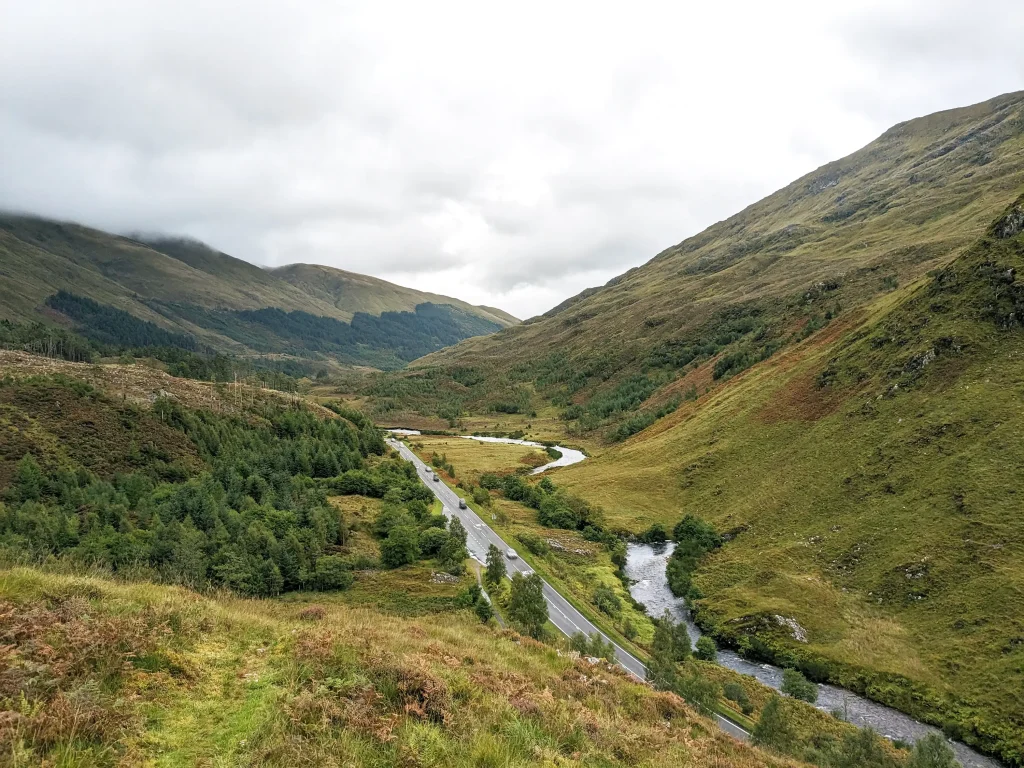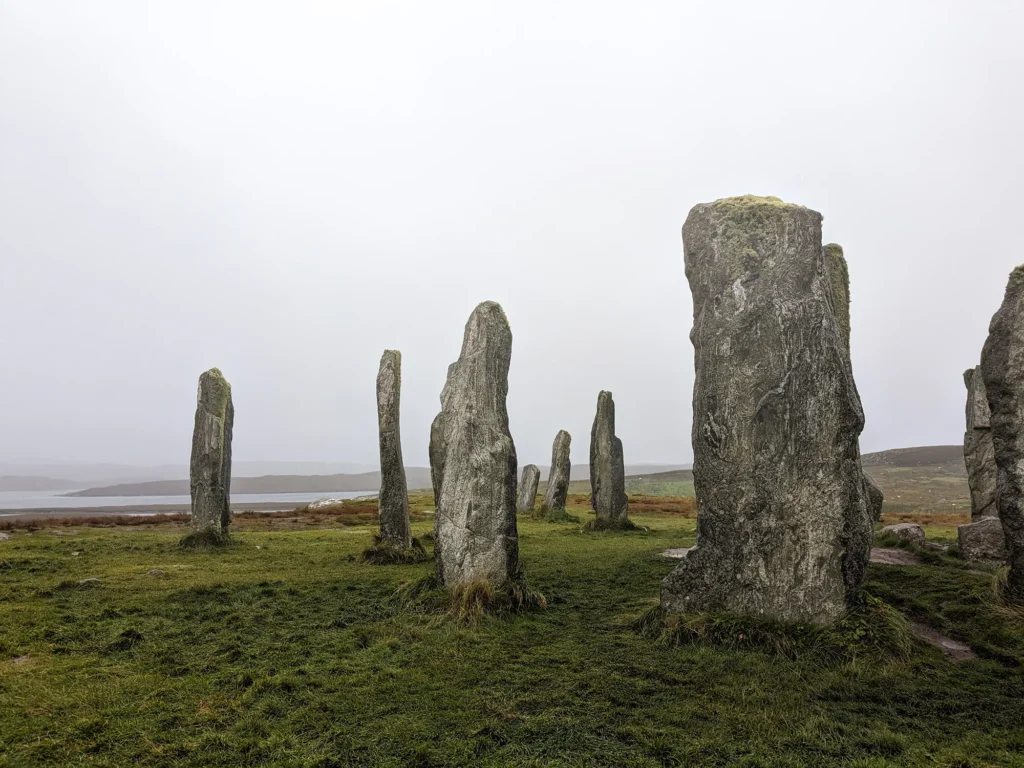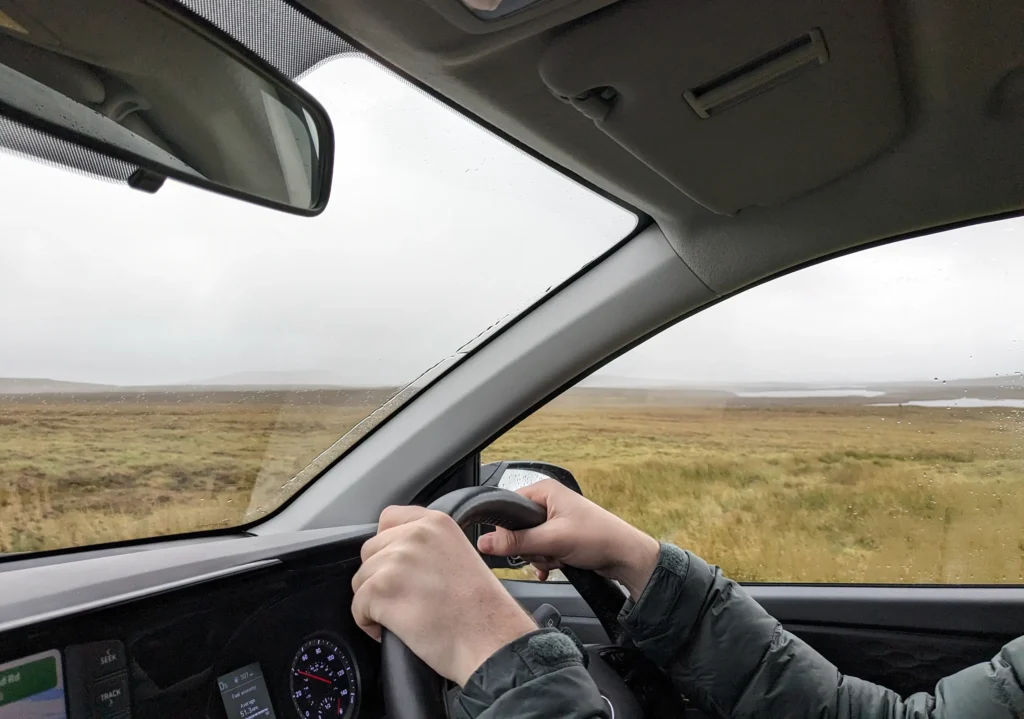Crowds
One of the best things about visiting in shoulder season is being able to avoid the summer crowds.
By early September, UK students are back in school, meaning you’ll see fewer families travelling. Instead, we noticed more older couples on the road and learned that many UK retirees plan caravan trips in September.
That said, we found that popular destinations like the Isle of Skye and Fort William were still busy. We booked our accommodation three months in advance and still found availability becoming limited – so if you can, it’s best to book early.
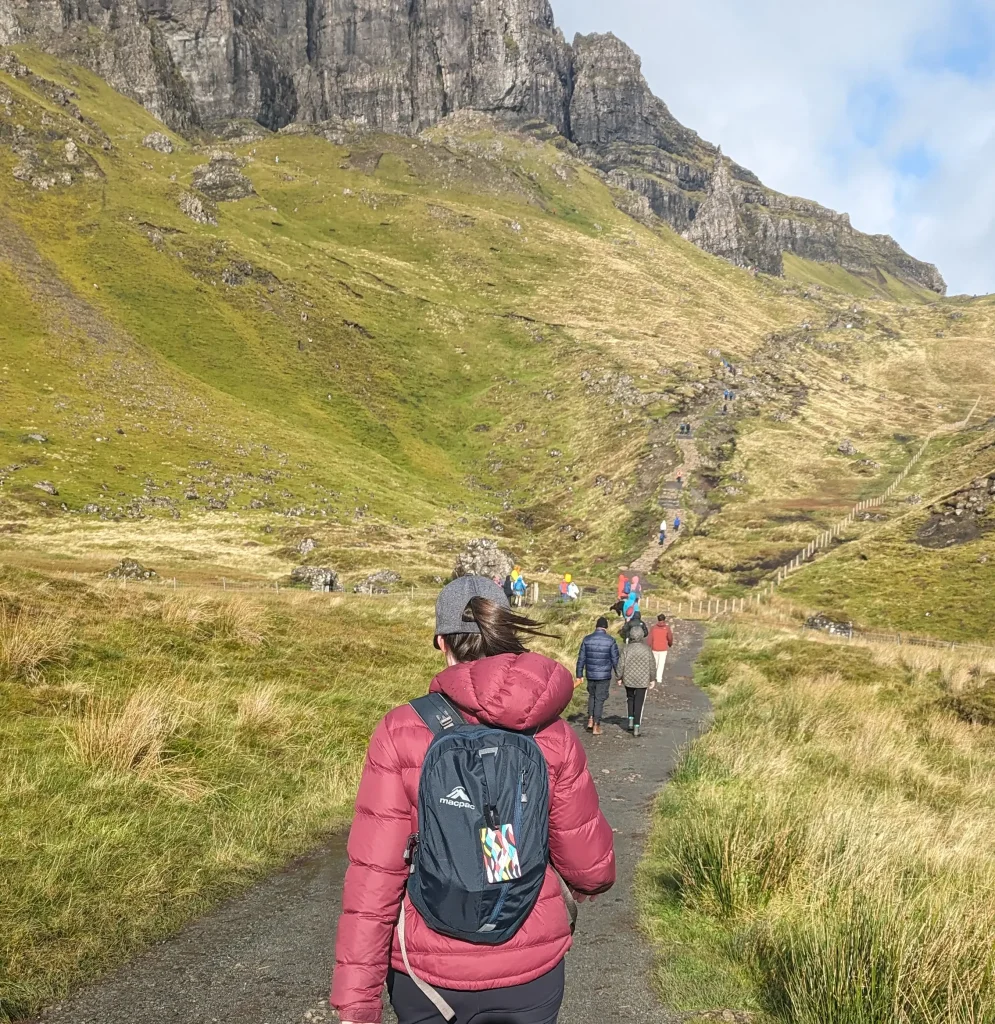
Which Places Stay Open in September?
As you head further north through Scotland, particularly on the Isles, some attractions and restaurants begin to close for the season. However, in September most key sights still remain open – we had no trouble seeing everything on our list (including the Iron Age House on the Isle of Lewis, which did close just a week later).
I’d recommend checking for seasonal closures or reduced hours before making a long trip to a specific attraction.
What’s the Weather Like?
You’ve probably heard of Scotland’s weather being described as ‘four seasons in one day’ and this is definitely true in September. You’ll need to be ready for anything, and weather apps won’t always be reliable.
Still, the unpredictable weather is part of Scotland’s charm and shouldn’t put you off visiting. (My partner and I reminded ourselves of this more than once when the weather wasn’t on our side.)
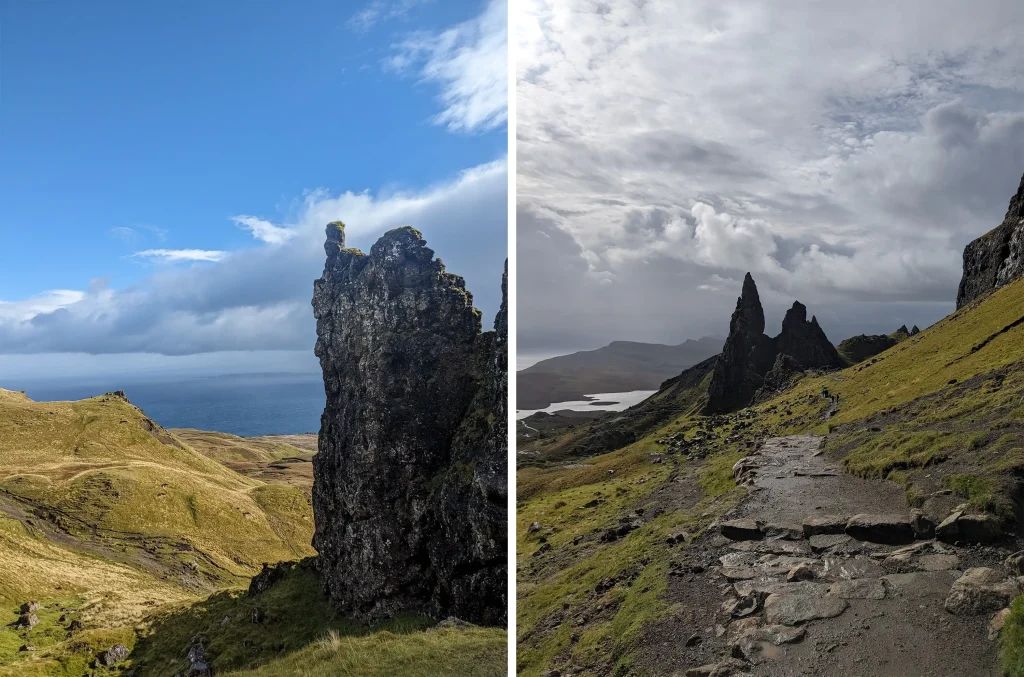
Average Temperatures
Scotland’s weather varies depending on where you are, with the north generally being cooler than the south. In Edinburgh, daytime temperatures in September typically range from 17°C to 15°C (63°F to 59°F), dropping to around 10°C to 8°C (50°F to 46°F) at night. The Isle of Skye sees similar lows but doesn’t warm up as much during the day, averaging between 15°C and 13°C (59°F to 55°F).
The wind makes it feel colder than the actual temperature, but on calmer days, the sun still holds onto some of summer’s warmth. We weren’t walking around in T-shirts, but there were plenty of moments when we needed to shed layers – especially while hiking. (That said, we’re from sunny Australia, so if you’re used to a cooler climate, your experience might be different!)
With Scotland’s unpredictable weather, layering is essential. You could drive just 20 minutes and find yourself in an entirely different climate, so you need to be prepared every day.
Daylight Hours
We were pleasantly surprised by how late the sun set in September, giving us plenty of time to explore without early starts. With the long daylight hours, we were able to fit in everything on our list without feeling rushed. Most days, we stayed out until just before dark to make the most of it.
At the start of September, you can expect around 14 hours of daylight, gradually decreasing to 11.5 hours by the end of the month.
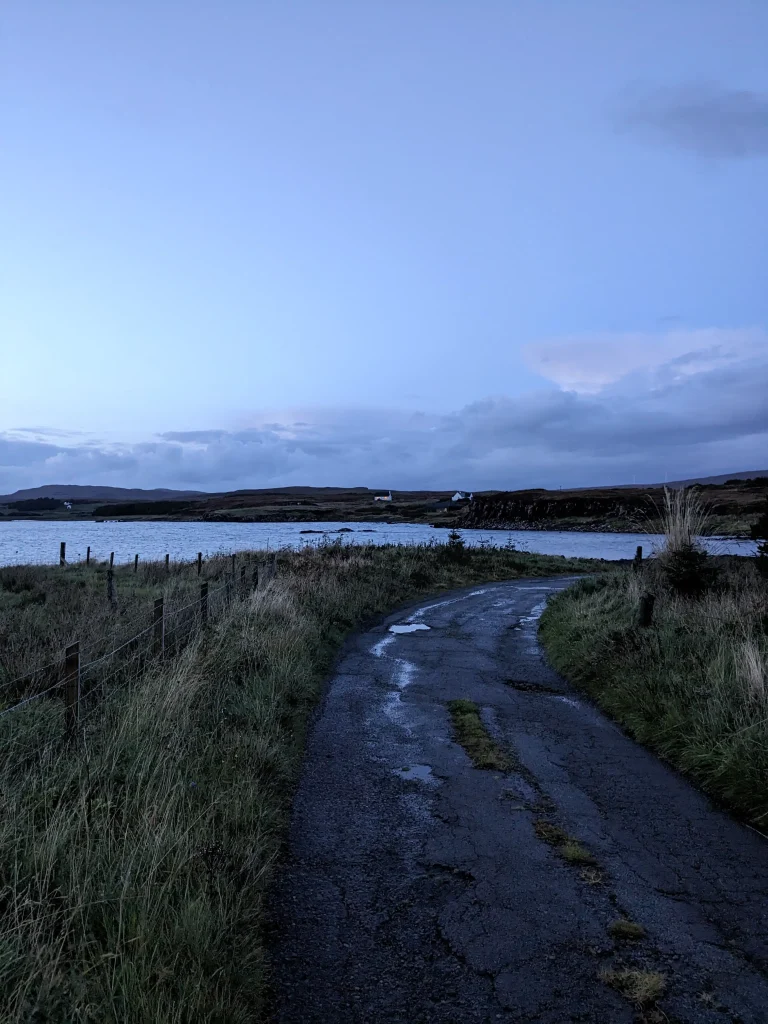
Rain
During our 12-day trip, we experienced plenty of drizzle but only two days of heavier rain – and no thunderstorms. Most of the time, it wasn’t heavy enough to stop us from exploring and was followed by clear skies, which meant we were able to see plenty of rainbows!
Wind
Scotland can be very windy. The strongest winds tend to be on the isles, at higher altitudes and in exposed areas (which is to be expected). Because of this, I highly recommend packing a windproof layer – it makes a huge difference.
You might be tempted to bring an umbrella for the rain, and while that’s fine for drizzly days in Edinburgh, it’s not worth the hassle in the countryside. It’ll likely get caught in the wind and break.
Our windiest experience was hiking the Old Man of Storr, where we were so exposed that the wind and rain hit us at full force. At one point, we had to crouch down for a couple of minutes just to keep our balance. But don’t let that put you off – we finished the hike just fine, and not long after, the sun even came out. That was the day we truly understood the phrase: If you don’t like the weather, wait five minutes.
A quick tip if you have a hire car: Be extra careful when opening the doors in windy areas, a strong gust can easily rip a door from your hands.
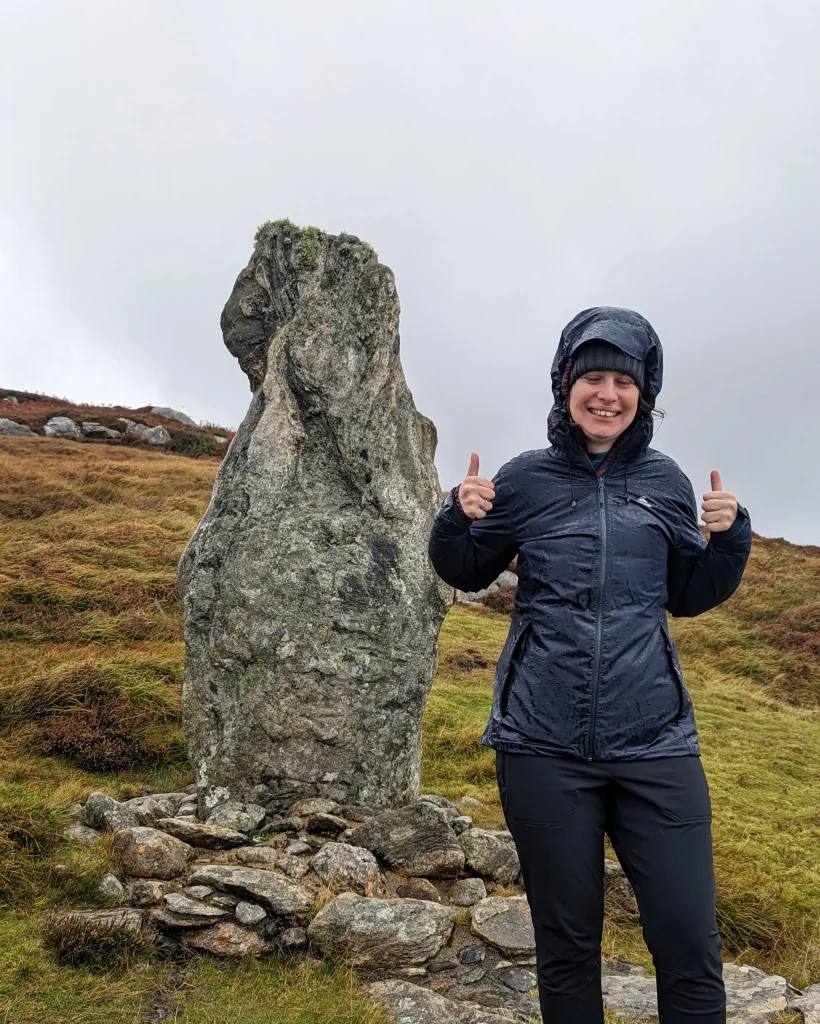
Autumn Colours
If you’re hoping to see Scotland’s landscapes covered in vibrant autumn colours, September is a bit too early.
Even towards the end of the month, the leaves were only just starting to change. We spotted a few hints of yellow and orange in the Cairngorms National Park, but nothing close to peak autumn foliage, and definitely no leaves falling yet.
Heather
Heather is a beautiful purple shrub that blooms across Scotland in late summer. By the time we visited in mid-to-late September, the flowers had already faded to a dull brown. If seeing Scottish heather in full bloom is something you want to experience, I suggest planning your trip for August.
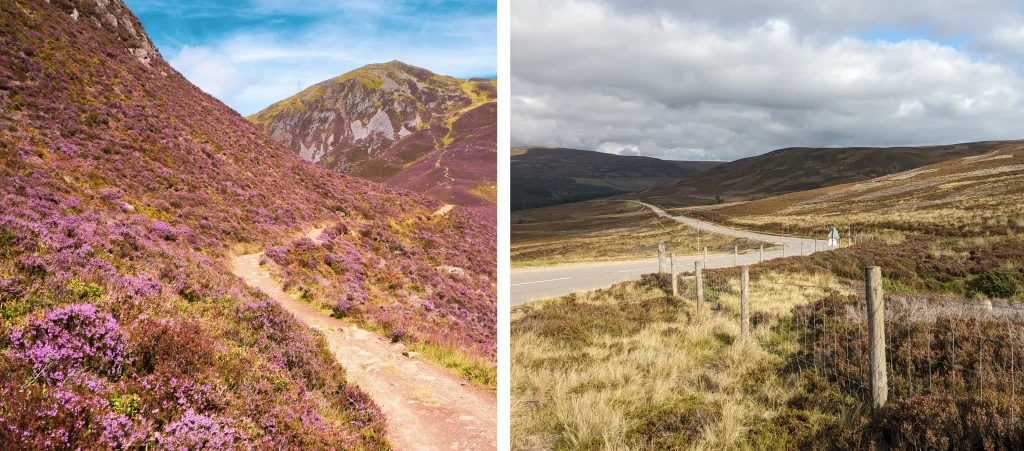
Midges
Midges are infamous in Scotland during the summer months. These insects, similar to mosquitoes, bite and feed on blood – but unlike mosquitoes, they cut the skin, causing a sharp, stinging pain. If you want to learn more about midges, check out this Highland Titles article from people who really know their stuff.
We were a bit concerned, especially since my partner is usually a magnet for mosquitoes, but surprisingly, we didn’t get bitten once. We wore long sleeves most days, which likely helped, but it’s safe to say that midges are less of an issue in September.
What to Pack for Scotland in September
The key to dressing for Scotland in September is layering, which ensures you’re prepared for whatever weather conditions are thrown at you.
- A waterproof/windproof jacket
- A packable puffer jacket
- A warm fleece or sweater
- Comfortable walking shoes or boots (preferably waterproof or quick drying)
- A beanie and gloves for chilly mornings or evenings.
- A mix of short and longer sleeve shirts
- A day backpack to carry essentials, snacks and stow away your puffer or waterproof jacket when you’re not using them. This foldable daypack folds down to not much bigger than the size of your palm, so it barely takes up any space in your luggage, and it’s waterproof enough to cope with light rain – which you’ll almost definitely experience at some point.
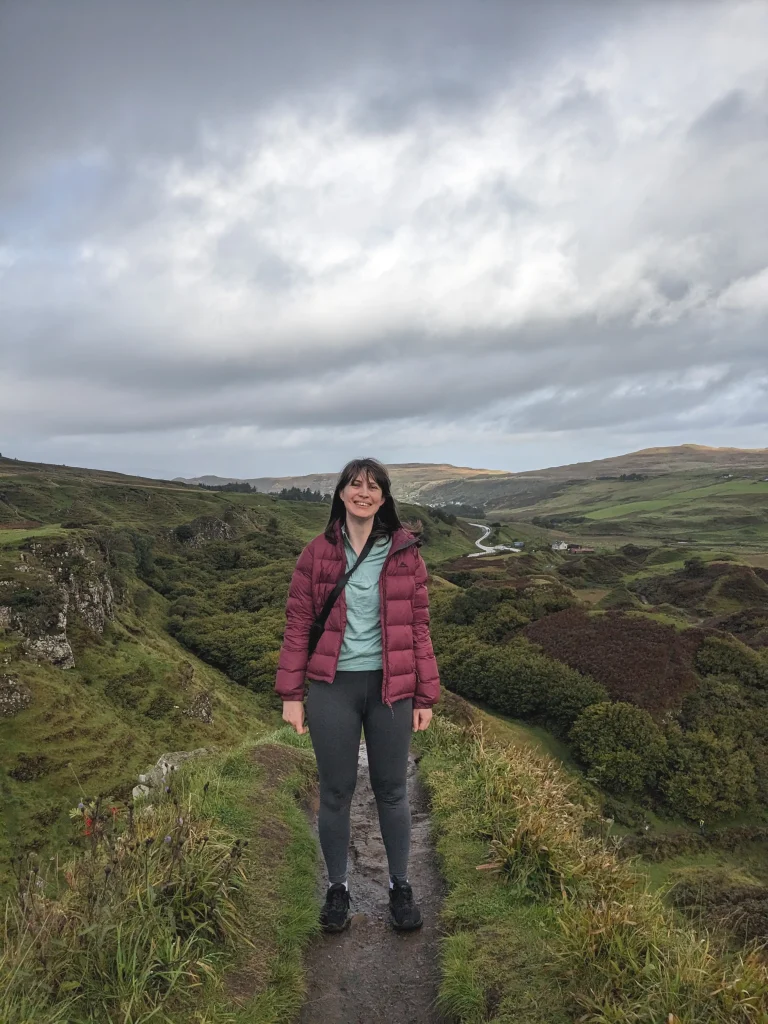
Driving in Scotland in September
We found driving in Scotland during September to be generally easy. With the summer crowds easing, there were less cars on the road, making single-track roads and passing places much easier to navigate.
The only time we really encountered slow traffic was on our way to the Fairy Pools on the Isle of Skye. There were a lot of other tourists, and the narrow sections of the road caused some stop-and-go delays, which probably added an extra 20 minutes to our drive.
Due to Scotland’s unpredictable weather, it’s essential to be prepared for all kinds of conditions – rain, strong winds, or fog. And as with any driving, it’s important to stay cautious – slow down when visibility is bad, drive carefully if it’s wet, and keep your headlights on at all times to stay visible to other drivers.
